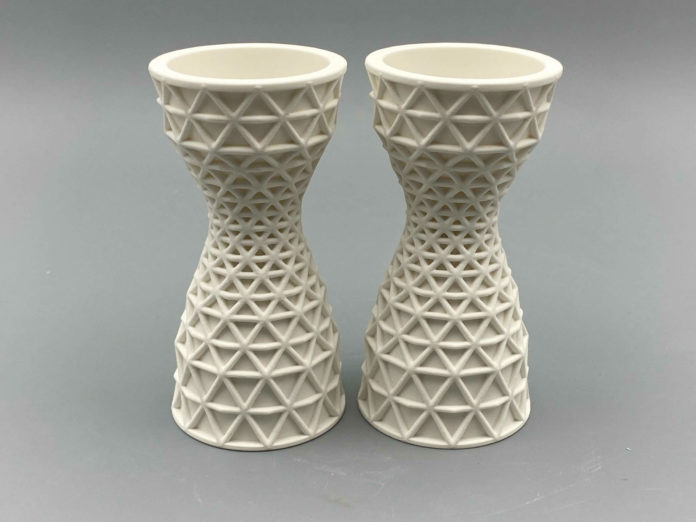One of the first lessons you learn in this industry is that, materials enable new applications. Fortify for instance, is a company that has raised awareness on the ability of its technology to produce composite 3D printed parts through an interesting combination of photopolymer composites and magnetic 3D Printing.
The Boston-based startup is now going to explore the use of technical ceramics for end-use part production. These materials will be developed by its new materials partner, Tethon 3D, an expert in the formulation of photo-curing ceramic polymer resins.
“Expanding our platform to the technical ceramics market is a natural evolution for Fortify,” Joshua Martin, CEO and Co-Founder of Fortify said. “Pushing the envelope with these materials requires processing of highly-loaded, abrasive, and viscous materials. These are the same capabilities that drive our success across various technical photopolymers. Tethon 3D is an ideal partner for us based on their ability to quickly formulate materials. We’re excited with what they have been able to accomplish with our technology in-house in just six weeks.”
According to analysts, the market for 3D printed technical ceramics is on the precipice of a new long-term period of growth. The compounded annual growth rate (CAGR) from 2021-2027 is expected to reach 33%. Fortify seeks to accelerate the transition of technical ceramics manufactured via conventional methods (representing an $8B market today) to additive manufacturing. Applications for ceramic materials include extreme temperature environments, high wear requirements, and broad chemical compatibility. Historically, manufacturing challenges have inhibited the growth of ceramics, but now 3D printing allows complex geometries to be fabricated easily and will play a key role in accelerating adoption of this class of materials.
“We are excited to partner with Fortify as the ceramics market grows,” Trent Allen, CEO of Tethon 3D said. “We have clear demand from our customer base for more production-oriented solutions. Fortify Flux printers are a natural complement to our Bison 1000 DLP printer customers as they look to scale their operations.”
To develop these high performance materials for Fortify’s platform, Tethon 3D has installed a FLUX CORE printer in its Omaha NE development facility in mid-june. They have been using the machine alongside the company’s Flux Developer software to develop two materials.
According to Fortify, these materials, Fortify High Purity Alumina (99.8%) (HP-A 99.8) and Low Shrink Aluminum Silicate (LS-AS), have the lowest shrink rate of any similar materials on the market and will enable new geometries for customers across industries.
Remember, you can post job opportunities in the AM Industry on 3D ADEPT Media free of charge or look for a job via our job board. Make sure to follow us on our social networks and subscribe to our weekly newsletter : Facebook, Twitter, LinkedIn & Instagram ! If you want to be featured in the next issue of our digital magazine or if you hear a story that needs to be heard, make sure you send it to contact@3dadept.com


